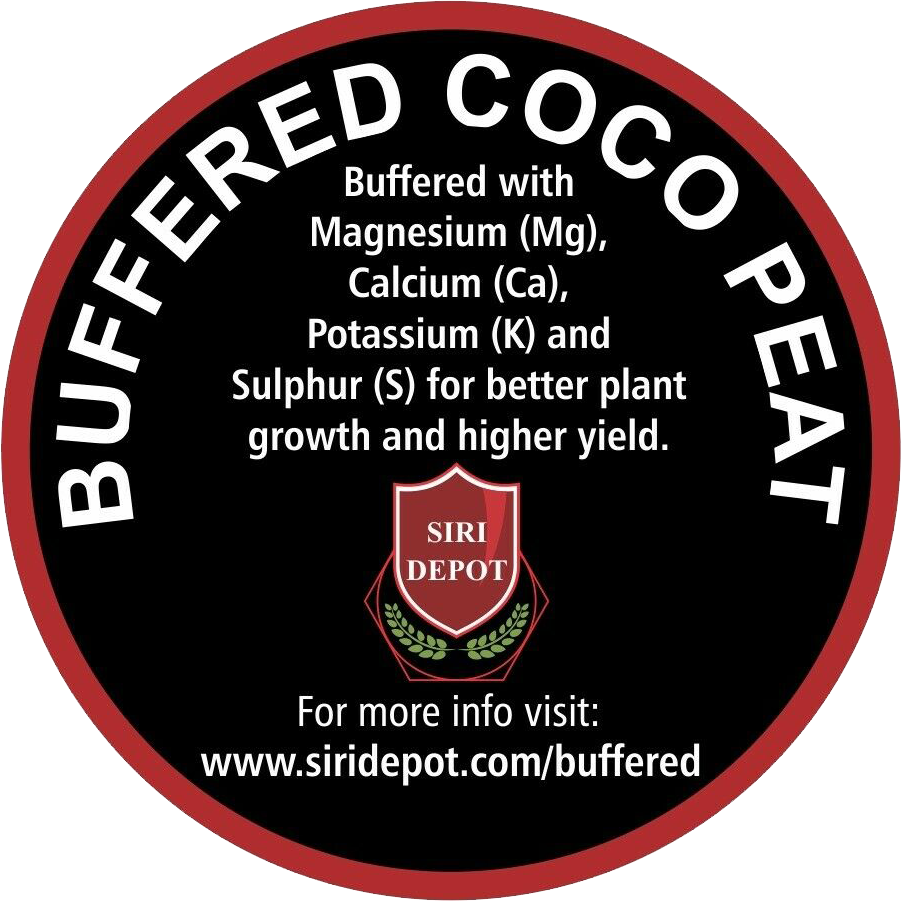Buffered Coco Peat

Coco coir is a byproduct of industries that use coconuts. It is an organic product derived from processing coconut husks from coconut tree plantations grown in the tropical and subtropical areas of West Africa, Asia, South America and Central America.
The processing of coco husks to obtain coco coir involve a series of steps like aging, washing, rinsing, buffering, drying, grinding, grading, and compressing into different size and type of blocks.
These steps are necessary to change the physical and chemical characteristics of coco coir and guarantee product quality, consistency and uniformity suitable for plant growing. Without proper processing, coco coir will have an excessive salt content; degenerate and compact resulting in problems with Pythium root rot; and lead to nutritional imbalances especially related to calcium and magnesium deficiencies. Coco coir has a negatively charged complex. The total number of cations it can hold and exchange, its total negative charge, is called Cation Exchange Capacity (CEC). Coco coir CEC varies between 40 and 60 meq/100 g. This means coco coir has the capacity to hold nutrients, but it also means it can lock them up leading to nutrient deficiencies.
Prior to any treatment, coco coir’s cation exchange complex is naturally saturated with sodium due to coconut trees natural proximity to coastal areas and high tolerance for salt (sodium chloride). Coco coir’s initial salt content, measured by the electrical conductivity (EC) can range between 2 and 6 mS/cm - excessive for plant growing. Coco coir’s cation exchange complex also naturally contains large amounts of potassium, which competes with magnesium and calcium for uptake.
All high quality coco coir should be abundantly washed with fresh water until reaching an EC below 1.0 mS/cm (based on 1:1.5 extraction method). Even after washing, coco coir still contains residual sodium and potassium left in the complex, which can lead to nutrient lock up later. To stabilize the cation exchange complex and avoid nutrient deficiencies during the crop season, adequate buffering of coco coir is essential.
Buffering process and quality standards
It is important to understand that washing and buffering are two very different processes that accomplish two very different goals. While washing removes only elements soluble in water, buffering also removes elements, which are naturally bound to the cation exchange complex.
During the buffering process, coco coir cation exchange complex is saturated with a solution of calcium nitrate for an extended period. The absorbed calcium displaces the residual potassium and sodium in the complex, which is washed away. According to Dutch RHP certification standards for coco substrates, buffered coco coir should contain less than 1 mmol sodium and less than 2 mmol potassium. The buffering process also reduces problems with nitrogen draw-down that would occur in non-buffered coco peat.
When and why buffering matters
Buffering is especially important for growers who want to apply calcium and magnesium to their crops and/or growers who recirculate their drainage water. It gives growers more control over the amount of calcium provided to the crop and prevents excessive accumulation of salts if not draining to waste.
If the coco coir cation exchange complex is not buffered, the positively charged cations applied to the plants like calcium and magnesium will have a stronger attraction to the coco complex and become unavailable to plants (nutrient lockup), while potassium and sodium, less attached to the complex, will be displaced, come into solution and be taken up by the plant instead of calcium. This leads to all sorts of crop problems - from excessive salt uptake by roots to calcium deficiencies, which is something growers wish to avoid at all cost. Calcium is a crucial regulator for plant’s growth and is involved in nearly all aspects of plant development. Some of the most noticeable signs of calcium deficiencies tend to appear on new, upper leaves and include dead spots, crinkling, spotting and mottling, small brownish spots, stunted growth, small and distorted new leaves, curled tips, leaf die-off, etc. Clearly not a situation a grower wants!
Buffering coco prevents all this since in buffered coco coir, the cation exchange sites have already been occupied by calcium while sodium and potassium have been washed away.
Most coco coir being sold today is washed, but not all coco coir is nutrient buffered. Often the option of buffered coco is available but at an extra cost.
Clean, buffered coco coir is the choice for any grower who wants healthy happy plants that reach their full potential.
